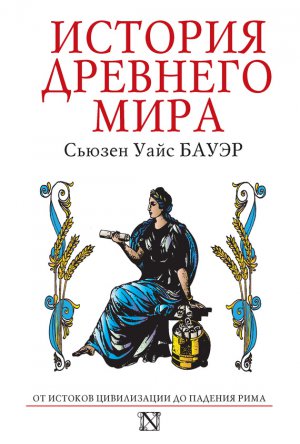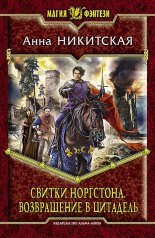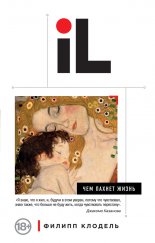»стори€ ƒревнего мира. ќт истоков ÷ивилизации до падени€ –има Ѕауэр —ьюзен

Л29Ы Stanley Wolpert, A New History of India (2004), p.†11.
Л30Ы Keay, p.†2.
Л31Ы J.†A.†G.†Roberts, The Complete History of China (2003), p.†3.
Л32Ы Anne Birrell, Chinese Mythology: An Introduction (1993), p.†46.
Л33Ы Steven Roger Fischer, A History of Writing (2001), pp.†25Ц26. ‘ишер указывает на Ўманд-Ѕессера как на Ђведущего сторонника этой теорииї Ч но оговариваетс€, что эта теори€ (подобно большинству иных теорий на начальном этапе их существовани€) по-прежнему остаетс€ спорной.
Л34Ы Quoted in W. V. Davies, Egyptian Hieroglyphs: Reading the Past (1987), p.†47.
Л35Ы ЂEnmerkar and the Lord of Arattaї, translated by J. A. Black, et al., in The Electronic Text Corpus of Sumerian Literature at http://www.etcsl.orient.ox.ac.uk/ (1998Ц); hereafter abbreviated as FTC.
Л36Ы Translated by Sandars, p.†61.
Л37Ы Sandars, p.†71. я очень об€зана H.† .†—андарс, обеспечившей дополнительные краски дл€ моего повествовани€ вводным эссе к своим переводам, где она анализирует различные исторические варианты, могущие лежать в основе описани€ северного путешестви€ √ильгамеша.
Л38Ы ¬ерсию списка, на которой € основываюсь, см.: Kramer, The Sumerians, pp.†78Ц80. ƒоктор рамер также сравнивает этот документ с Ђ÷арским спискомї, чтобы показать ход конфликта между двум€ городами.
Л39Ы ЂGilgamesh and Agga of Kishї, in ETC.
Л40Ы Herodotus, The Histories, translated by Robin Waterfield (1998), 2.99.
Л41Ы Ian Shaw, ed., The Oxford History of Ancient Egypt (2002), pp.†68Ц69.
Л42Ы Rudolf Anthes, ЂEgyptian Theology in the Third Millennium B.C.ї, Journal of Near Eastern Studies 18:3 (1959), p.†171.
Л43Ы Ibid.
Л44Ы Ian Cunnison, The Luapula Peoples of Northern Rhodesia (1959), p.†98.
Л45Ы Edmund Leach, ЂThe MotherТs Brother in Ancient Egyptї, RAIN [Royal Anthropological Institute of Great Britain and Ireland] 15 (1976), p.†20.
Л46Ы Shaw, p.†9.
Л47Ы William Flinders Petrie, Researches in Sinai (1906), p.†41.
Л48Ы Rice, p.†14.
Л49Ы Peter A. Clayton, Chronicle of the Pharaohs: The Reign-by-Reign Record of the Rulers and Dynasties of Ancient Egypt (1994), p.†28.
Л50Ы Dailey, p.†42 ff.
Л51Ы —ам ЂЁпос о √ильгамешеї так или иначе €вл€ютс€ источником. я основывалась на его структуре, данной в переводе H. . —андарс, но слегка сократила цитируемый текст, убрала из него наиболее трудные слова и частично изменила его на основании поправок от следующих лиц: —эмюэль рамер, ћорин √эллери овакс и —тефани ƒэлли.
Л52Ы ѕрактически полностью вз€то из перевода —андарс: pp.†118Ц119.
Л53Ы Clayton, p.†33.
Л54Ы Richard L. Zettler and Lee Home, Treasures from the Royal Tombs of Ur(1998), p.†29.
Л55Ы This is J. M. RobertsТs suggestion in The Penguin History of the World (1997), p.†71.
Л56Ы Herodotus, 2.12.
Л57Ы Paul Jordan, Riddles of the Sphinx (1998), p.†73.
Л58Ы Clayton, p.†45.
Л59Ы Herodotus, 2124.
Л60Ы Herodotus 2126.
Л61Ы Bruce G. Trigger, ЂMonumental Architecture: A Thermodynamic Explanation of Symbolic Behaviorї, World Archaeology 22:2 (1990), p.†119.
Л62Ы Dean Hardy and Maijorie Killick, Pyramid Energy: The Philosophy of God, the Science of Man (1994), p.†169.
Л63Ы Peter Tompkins, Secrets of the Great Pyramid (1971), p.†XIV.
Л64Ы James and Thorpe, p.†208.
Л65Ы Translated by Samuel Kramer, The Sumerians, p.†51.
Л66Ы Ibid., p.†313.
Л67Ы John Winthrop Hackett, ed., Warfare in the Ancient World (1989), p.†4.
Л68Ы Leick, Mesopotamia, p.†149.
Л69Ы I.M. Diakonoff, ed., Early Antiquity (1991), p.†82.
Л70Ы Translated by Samuel Kramer, From the Tablets of Sumer (1956), p.†48.
Л71Ы Diakonoff, p.†82.
Л72Ы J. S. Cooper, Sumerian and Akkadian Royal Inscriptions, vol.†1, Pi esargomc Inscriptions (1986), p.†78.
Л73Ы Nels Bailkey, ЂEarly Mesopotamian Constitutional Developmentї, American Historical Review 72:4 (1967), p.†1222.
Л74Ы Translated by Kramer, The Sumerians, pp.†323Ц324.
Л75Ы Leick, Mesopotamia, p.†150.
Л76Ы Translated by Kramer, The Sumerians, pp.†322Ц323.
Л77Ы Cooper, p.†95.
Л78Ы Crawford, p.†25.
Л79Ы ѕересказ, основанный на переводе, представленном в: James ¬. Pritchard, ed., in The Ancient Near East: An Anthology of Texts and Pictures (1958), pp.†85Ц86, с очисткой дл€ лучшего понимани€ от некоторых терминов, предложенной в: Gwendolyn Leick in Mesopotamia, p.†94.
Л80Ы J. M. Roberts, p.†51.
Л81Ы Translated by Kramer, The Sumerians, p.†330.
Л82Ы Xenophon, The Education of Cyrus, translated by Wayne Ambler (2001), 1.3.8Ц9.
Л83Ы ЂThe Sargon Legend, Segment ¬ї, in ETC.
Л84Ы Translated by Kramer, The Sumerians, p.†324.
Л85Ы Diakonoff, p.†85.
Л86Ы Ibid.
Л87Ы Translated by Kramer, The Sumerians, p.†324.
Л88Ы H. W. F. Saggs, The Might That Was Assyria (1984), p.†19.
Л89Ы Adapted from Benjamin R. Foster, Before the Muses: An Anthology of Akkadian Literature, vol.†1 (1996), p.†254.
Л90Ы Michael Roaf, Cultural Atlas of Mesopotamia and the Ancient Near East (1996), p.†97.
Л91Ы A. Leo Oppenheim, Ancient Mesopotamia: Portrait of a Dead Civilization (1977), p.†154.
Л92Ы Diakonoff, p.†86.
Л93Ы Bailkey, p.†1225. ѕримечани€ Ѕейкли содержат полную библиографию древних вавилонских надписей, так называемых Ђ“екстов ѕредзнаменовани€ї, содержащих записи о восстании.
Л94Ы Leick, Mesopotamia, p.†99.
Л95Ы еау, p.†6.
Л96Ы Wolpert, pp.†14Ц15.
Л97Ы Fischer, p.†61.
Л98Ы Wolpert, p.†18.
Л99Ы Keay, p.†13.
Л100Ы Hermann Kulke and Dietmar Rothermund, A History of India (1998), p.†23.
Л101Ы Ibid., pp.†22Ц23.
Л102Ы “ерминологи€ и размерени€ вз€ты из: Kulke and Rothermund, p.†23, and Keay, pp.†8Ц9.
Л103Ы Herodotus, 2.127Ц128.
Л104Ы Jordan, p.†80.
Л105Ы Ibid., p.†XVII.
Л106Ы Herodotus, 2.129.
Л107Ы Herodotus, 2.133.
Л108Ы Herodotus, 2.131.
Л109Ы Clayton, p.†60.
Л110Ы A. Rosalie David, The Egyptian Kingdoms (1988), p.†16.
Л111Ы јбзац 217 дан в переводе из: J. H. Breasted in Development of Religion and Thought in Ancient Egypt (University of Chicago Press, 1912); далее абзац 309 вз€т в переводе: R. ќ. Faulkner in The Ancient Pyramid Texts (Clarendon Press, 1969); оба процитированы: Jon E. Lewis, ed., Ancient Egypt (2003), pp.†27Ц29.
Л112Ы Clayton, p.†64.
Л113Ы Quoted in Clayton, p.†67.
Л114Ы Colin McEvedy, The New Penguin Atlas of Ancient History (2002), p.†36.
Л115Ы Kramer, The Sumerians, p.†61.
Л116Ы Roaf, p.†98.
Л117Ы ¬первые отмечено: Hugo Radau, Early Babylonian History Down to the End of the Fourth Dynasty of Ur (1899), p.†307.
Л118Ы David Willis McCullough, ed., Chronicles of the Barbarians (1998), p.†8.
Л119Ы Oppenheim, Ancient Mesopotamia, p.†62.
Л120Ы ЂThe Cursing of Agadeї, in ETC.
Л121Ы Ibid.
Л122Ы Kramer, The Sumerians, p.†330.
Л123Ы Ђј tigi to Bau for Gudeaї, in ETC.
Л124Ы ЂThe Victory of Utu-hegalї, in ETC.
Л125Ы Kramer, The Sumerians, p.†325.
Л126Ы ЂUr-Namma the canal-diggerї, in ETC.
Л127Ы Ђј praise poem of Ur-Nammaї in ETC.
Л128Ы Gen. 10:11Ц24.
Л129Ы Victor P. Hamilton, The Book of Genesis: Chapters 1Ц17 (1990), p.†363.
Л130Ы Adapted from ЂThe death of Ur-Namma (Ur-Namma A)ї, in ETC.
Л131Ы Jonathan N. Tubb, Canaanites: Peoples of the Past (1998), p.†15.
Л132Ы J. M. Roberts, p.†41.
Л133Ы Tubb, p.†39.
Л134Ы Donald B. Redford, Egypt, Canaan, and Israel in Ancient Times (1992), pp.†63Ц64.
Л135Ы Aidan Dodson and Dyan Hilton, The Complete Royal Families of Ancient Egypt (2004), p.†80.
Л136Ы Quoted in Redford, Egypt, pp.†67Ц68.
Л137Ы QurТan 2.144Ц150.
Л138Ы Roaf, p.†101.
Л139Ы Quoted in Leick, Mesopotamia, pp.†132Ц133.
Л140Ы Leick, Mesopotamia. p.†126.
Л141Ы Roaf, p.†102.
Л142Ы Tubb, p.†38.
Л143Ы John Perlin, Forest Journey: The Role of Wood in the Development of Civilization (1991), p.†43.
Л144Ы Thorkild Jacobsen, Salinity and Irrigation Agriculture in Antiquity (1982), p.†468.
Л145Ы D. Bruce Dickson, ЂCircumscription by Anthropogenic Environmental Destruction: An Expansion of CameiroТs (1970) Theory of the Origin of the Stateї, American Antiquity 52:4 (1987), p.†713.
Л146Ы Kramer, The Sumerians, pp.†333Ц334, adapted.
Л147Ы Ibid., pp.†334Ц335, adapted.
Л148Ы Ќесколько адаптировано из: ЂThe Lament for Urimї, in ETC.
Л149Ы Ibid.
Л150Ы Verbrugghe and Wickersham, p.†137.
Л151Ы Stephan Seidlmayer, ЂThe First Intermediate Periodї, in The Oxford History of Ancient Egypt, ed. Ian Shaw (2002), pp.†128Ц129.
Л152Ы Verbrugghe and Wickersham, p.†194.
Л153Ы Clayton, p.†72.
Л154Ы ЂInstructions for Merikareї, in Miriam Lichtheim, Ancient Egyptian Literature, vol.†1 (1975), p.†70.
Л155Ы Shaw, p.†161.
Л156Ы Ibid., p.†151.
Л157Ы Dodson and Hilton, p.†87.
Л158Ы Ibid., p.†90.
Л159Ы ЂThe Prophecy of Nerfertiї, quoted in Shaw, p.†158.
Л160Ы Clayton, p.†79.
Л161Ы Shaw, p.†160.
Л162Ы Silverman, p.†79.
Л163Ы Reconstruction of ЂIshbi-≈гга and Kindattuї, segments A, B, D, and E in ETC.
Л164Ы Roaf, p. no.
Л165Ы Saggs, Assyria, pp.†28Ц30.
Л166Ы Reconstructed from the somewhat fragmented ЂLetter from Nann-ki-ag to Lipit-Estar about GungunumТs troopsї and ЂLetter from Lipit-Estar to Nann-ki-ag about driving away the enemyї, both in ETC.
Л167Ы ЂAn adab to Nanna for Gungunum (Gungunum A)ї, in ETC.
Л168Ы L. W. King, The Letters and Inscriptions of Hammurabi, vol.†3 (1976), p.†213, translation of ЂReign of Sumu-abuї.
Л169Ы Translated by A. K. Grayson, Assyrian and Babylonian Chronicles (1975), p.†155.
Л170Ы Assyrian king list quoted in Saggs, Assyria, p.†25.
Л171Ы Daniel David Luckenbill, Ancient Records of Assyria and Babylon, Volume /. Historical Records of Assyria from the Earliest Times to Sargon (1926), p.†16.
Л172Ы Saggs, Assyria, p.†37.
Л173Ы Roaf, p.†116.
Л174Ы Saggs, Assyria, p.†25.Saggs, Assyria, p.†25.
Л175Ы Gwendolyn Leick, The Babylonians: An Introduction (2003), p.†33.
Л176Ы Oppenheim, Ancient Mesopotamia, p.†156.
Л177Ы H.†W.†F.†Saggs, Babylonians (1995), p.†98.
Л178Ы Ssu-ma ChТien, The Grand ScribeТs Records, vol.†1, ed. William H. Nienhauser, Jr., translated by Tsai-fa Cheng et al. (1994), p.†21.
Л179Ы Ibid., p.†22.
Л180Ы Ibid., p.†32.
Л181Ы John King Fairbank and Merle Goldman, China: A New History (2002), p.†37.
Л182Ы Li Liu and Xingcan Chen, State Formation in Early China (2003), p.†35.
Л183Ы Ibid., p.†35.
Л184Ы ChТien, p.†37.
Л185Ы Ibid., p.†38.
Л186Ы J.†A.†G.†Roberts, p.†5.
Л187Ы ChТien, p.†38; the exact quote is ЂI regret failing to kill TТang in Hsia-tТai; that is what has brought me to thisї.
Л188Ы Jorgen Laessoe, People of Ancient Assyria: Their Inscriptions and Correspondence (1963), p.†47.
Л189Ы ѕерефразировано дл€ лучшего понимани€ из: Laessoe, p.†50.
Л190Ы Laessoe, pp.†68Ц69.
Л191Ы Ibid., p.†76.
Л192Ы Ibid., p.†78.
Л193Ы –еконструкци€ јндре ѕарро из надписей ћари, приведено в: Jack ћ. Sasson, ЂThe King and I: A Mari King in Changing Perceptionsї, Journal of the American Oriental Society 118:4 (1998), p.†454.
Л194Ы King, vol.†2, p.†176.
Л195Ы Pritchard, p.†142.
Л196Ы Norman Yoffee, ЂThe Decline and Rise of Mesopotamian Civilization: An Ethnoarchaeological Perspective on the Evolution of Social Complexityї, American Antiquity 44:1 (1979), p.†12.
Л197Ы Saggs, Babylonians, p.†101.
Л198Ы King, vol 1, p.†XXXVII.
Л199Ы Roaf, p.†121.
Л200Ы Shaw, p.†169.
Л201Ы Clayton, p.†93.
Л202Ы Josephus, Against Apion, 1.14.74Ц77, in The Works of Josephus (1987).
Л203Ы Ibid., 1.14.85.
Л204Ы Redford, Egypt, p.†126.
Л205Ы George Steindorff and Keith C. Steele, When Egypt Ruled the East (1957), p.†29.
Л206Ы J.†Lesley Fitton, Minoans (2002), p.†67.
Л207Ы Ibid., pp.†104Ц105.
Л208Ы Ibid., p.†138.
Л209Ы Apollodorus, The Library (1921), 3.1.3Ц4 and 3.15.8.
Л210Ы Cyrus H. Gordon, The Common Background of Greek and Hebrew Civilizations (1965), pp.†51Ц52.
Л211Ы Thucydides, The Landmark Thucydides: A Comprehensive Guide to the Peloponnesian War, translated by Richard Crawley (1998), 1.4Ц5.
Л212Ы Herodotus, 1171.
Л213Ы Thucydides, 1.8.
Л214Ы Rodney Castleden, Minoans: Life in Bronze Age Crete (1990), p.†148.
Л215Ы Fitton, p.†166.
Л216Ы Christos G. Doumas, Them, Pompeii of the Ancient Aegean (1983).
Л217Ы Ibid., pp.†134Ц135.
Л218Ы Ibid., p.†139.
Л219Ы Ibid., p.†147.
Л220Ы Wolpert, p.†21.
Л221Ы G. F. Dales, ЂThe Mythical Massacre at Mohenjo Daroї, in Ancient Cities of the Indus, ed. G. L. Possehl (1979), p.†291.
Л222Ы Gregory L. Possehl, ЂThe Mohenjo-daro Floods: A Replyї, American Anthropologist 69:1 (1967), p.†32.
Л223Ы Ibid., p.†35.
Л224Ы Romila Thapar, Early India: From the Origins to AD 1300 (2002), p.†87.
Л225Ы Julian Reade, ЂAssyrian King-Lists, the Royal Tombs of Ur, and Indus Originsї, Journal of Near Eastern Studies 60:1 (2001), p.†27.
Л226Ы Wolpert, p.†27.
Л227Ы Ibid., p.†24.
Л228Ы Keay, p.†20.






